|
|
Post by campbellbox on Aug 24, 2015 19:40:56 GMT 12
Thanks for coming back to me on that Calum. I might make some time next time I'm up over to take in some WWI sights/sites. I like your point, corny though it may be, about remembering their sacrifice.
I'd be happy to hear about the Normandy side of the trip too, if only to compare notes.
|
|
|
|
Post by Calum on Aug 25, 2015 18:59:47 GMT 12
Thanks for coming back to me on that Calum. I might make some time next time I'm up over to take in some WWI sights/sites. I like your point, corny though it may be, about remembering their sacrifice. I'd be happy to hear about the Normandy side of the trip too, if only to compare notes. I'm in the process of putting the whole trip together in a blog (I'll just be cutting and pasting the stuff from this trhead when I get to it) Once I've finished I'll post the link, but that'll probably be a Christmas job. |
|
|
|
Post by Calum on Aug 25, 2015 19:18:08 GMT 12
At the Albert end of Pozières is the First Australian Division Memorial From www.ww1westernfront.gov.au/pozieres-australian-memorial/The memorial commemorates the officers, non-commissioned officers and men of the First Australian Division who fought in France and Belgium in 1916, 1917 and 1918. The commemorative tablet on the memorial lists the battle honours for the 1st Australian Division:  Another view of 1st Australian Division memorial. In the distance you can see the British Monument to the missing at Theipval. Mouquet (Called Moo-cow by the soldiers) Farm is out in that direction as well  The Gibraltar blockhouse From www.ww1westernfront.gov.au/pozieres-australian-memorial/on-this-spot-gibraltar-blockhouse-pozieres.php The concrete covered the entrance to a large cellar and a stairway led down to an even deeper room.  On the way to Thiepval we drove past Mouquet Farm, called Moo Cow Farm by the AIF. From Wikipedia   |
|
|
|
Post by Calum on Aug 28, 2015 20:33:49 GMT 12
Next stop was the Thiepval Memorial, the Memorial to the Missing of the Somme From www.cwgc.org/find-a-cemetery/cemetery/80800/THIEPVAL%20MEMORIALThe memorial was under renovation for the 100th anniversary in 2016, plus they were building an expansion to the vistors centre.  My wife inside the memorial. All the white stone panels are filled with names listed under the regiments in which the were serving when they died  Each the laurels signify a individual battle or engagement  Another view of the inside. So many names.  When they find or identify someone they are buried in a known grave then the name is removed from the memorial.  No relation to me but so many Gibson's from one Regiment (the Northumberland Fusiliers) . You have to assume many of them are related. Where there were people with the same initial their service number is listed.  Cross of Sacrifice in the centre of the cemetery out the back of the memorial. On the left is the French Cemetery, on the right is the Commonwealth Cemetery  The Terrain from the memorial - not much of a hill  Poppy in a silver beat field on the outskirts of the memorial  |
|
|
|
Post by suthg on Aug 29, 2015 10:22:07 GMT 12
Fascinating! Thanks.
|
|
|
|
Post by Calum on Sept 1, 2015 22:58:07 GMT 12
About 5 mins drive from Thiepval is the The Ulster Memorial Tower. This is a Somme battlefield memorial to the men of the 36th (Ulster) Division. It commemorates the heavy losses suffered by 36th Division on 1st July 1916, the first day of the Battle of the Somme. There is a small museum and shop on site.  Trench Mortar  Other stuff in the museum  |
|
|
|
Post by Calum on Sept 6, 2015 22:01:53 GMT 12
|
|
|
|
Post by Calum on Sept 16, 2015 22:55:52 GMT 12
After walking around Beaumont-Hamel Newfoundland Memorial we thought we should actually go into the town of Albert and have a look around the town. At the same time we could check out the Basilica and the Museum Somme 1916 under it. Albert was the main town behind the lines for the Allies nearest to the 1916 Somme battlefields. It lies on the main D929 road that runs east to Bapaume across the Somme battlefields, and west to Amiens in the other direction (although the D929 now diverts to the south around Albert, the original road still runs through it).  We managed to jag a park right opposite the Basilica and this guy was standing there, Australians are quite prominent around Albert.  Onto the Museum Somme 1916. The Tommy outside the museum with some good looking dude.  The Somme 1916 Museum in Albert occupies what was originally the crypt beneath the basilica, used as aircraft shelters in the world war 2. Alcoves show scenes of soldiers life. Unfortunately the light in museum wasn't that conducive to photo's. But we still got a few.    Nice model of French Char Renault F17 light tank.  Some Trench art. Soldiers made this in their spare time from whatever they had lying around.    Cap badges and other stuff recovered from the battlefield.   After the museum we wandered around and took a look into the Basilica.  After this we adjourned to a cafe across the road for a beer (wine for Jo) and a plate of cheese, cold meats etc. Quite civilised. After this little break we decided to head back to the hotel. But as we got there we figured we'd may as well check out the little cemetery behind the hotel. Although called Bapaume Post Military Cemetery it is actually on the outskirts of Albert, on the Albert to Bapaume road. This cemetery is typical of the hundreds of little cemeteries that litter the landscape of the Somme and Belgium.   |
|
|
|
Post by planecrazy on Sept 20, 2015 21:17:52 GMT 12
Wow your pictures are great, thank you so much for sharing, find them
quite emotional to look at, can only imagine what it is like to be there!
|
|
|
|
Post by Calum on Sept 25, 2015 20:42:41 GMT 12
We awoke to quite a nice day and headed off. Our final destination this day was to be Ypres. The area around Ypres was the site of the other major British/Commonwealth battles in World War I. And just to give you an idea, the distance by road is only 140kms however there are over 50 World War One cemeteries along the route We headed down the Albert to Bapaume road, towards Pozières. Just outside the town of Pozières, is the Pozières Memorial to the Missing of 1918. We only admired this place from the outside as we wanted to get some km's under our belt.  One of the sculptures in the edge of the gates  A view from the memorial looking towards Albert. That's the 1st Division Memorial on the left, where were yesterday.  Next we headed through Pozières towards Bapaume. The NZ division fought around Bapaume in 1918. On the 24 August it took a lead role. We stopped at Grévillers British Cemetery.  My wife in the middle of the cemetery   The French soldiers are marked with a cross. This is the marker used by the French in their Cemeteries for their soldiers.  Looking down the centre of the cemetery toward the NZ Memorial.  The Cross of Sacrifice in front of the memorial.   Poppies on the side of road opposite the cemetery. My wife went to take photos of some and brushed some stinging nettle. Needless to say one of us found that funny, and one didn't.  |
|
|
|
Post by Calum on Oct 7, 2015 22:53:29 GMT 12
|
|
|
|
Post by Calum on Oct 17, 2015 11:21:07 GMT 12
Messines Ridge (New Zealand) Memorial and The Huts Cemetery Pano from the memorial looking down the valley  The start line for the New Zealand Division was at the bottom of the valley. Around the far side of the ploughed field. 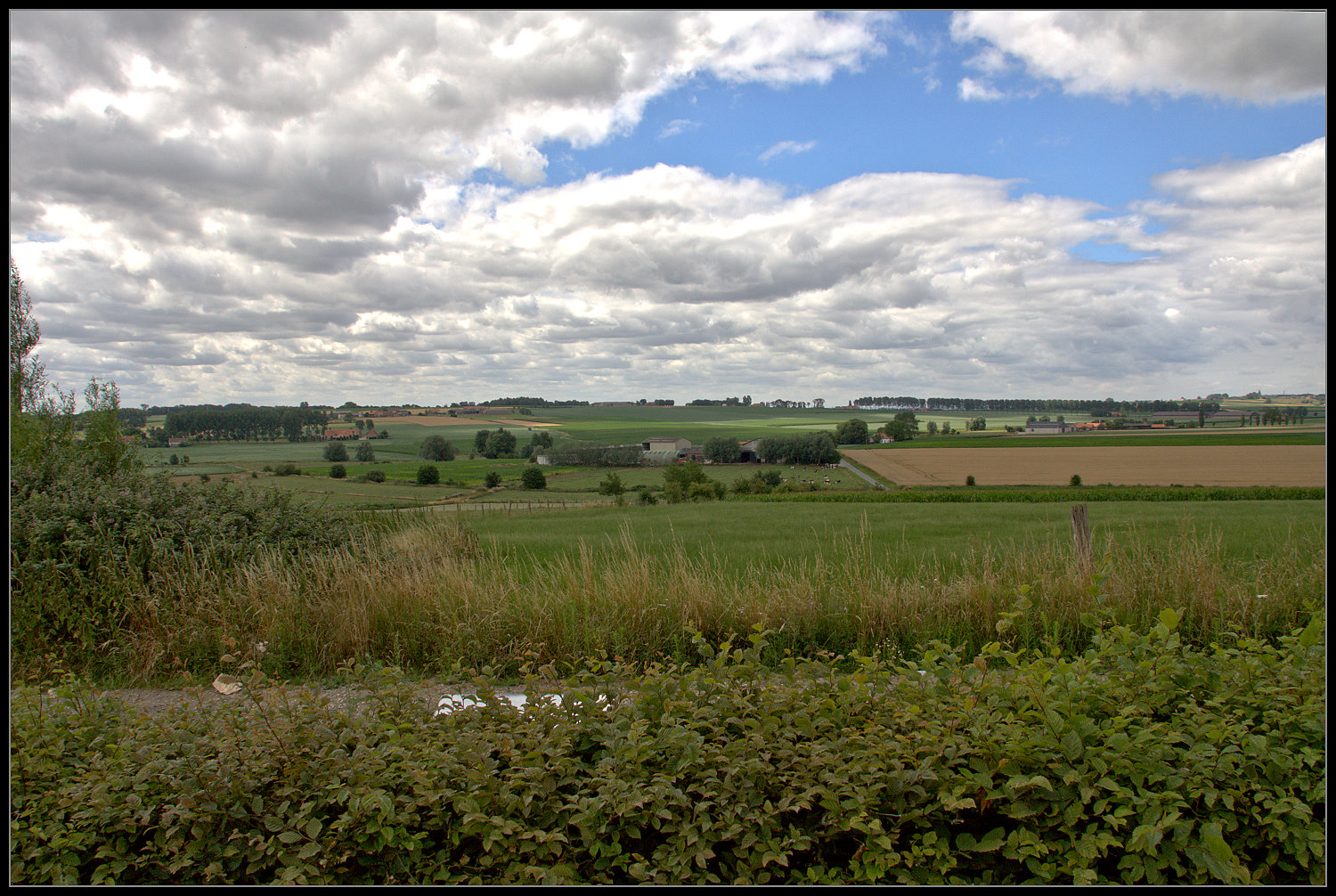 In the memorial are the remains of two blockhouses/pill boxes.  These were typical German defensive structures. You can see how impregnable to artillery they were. 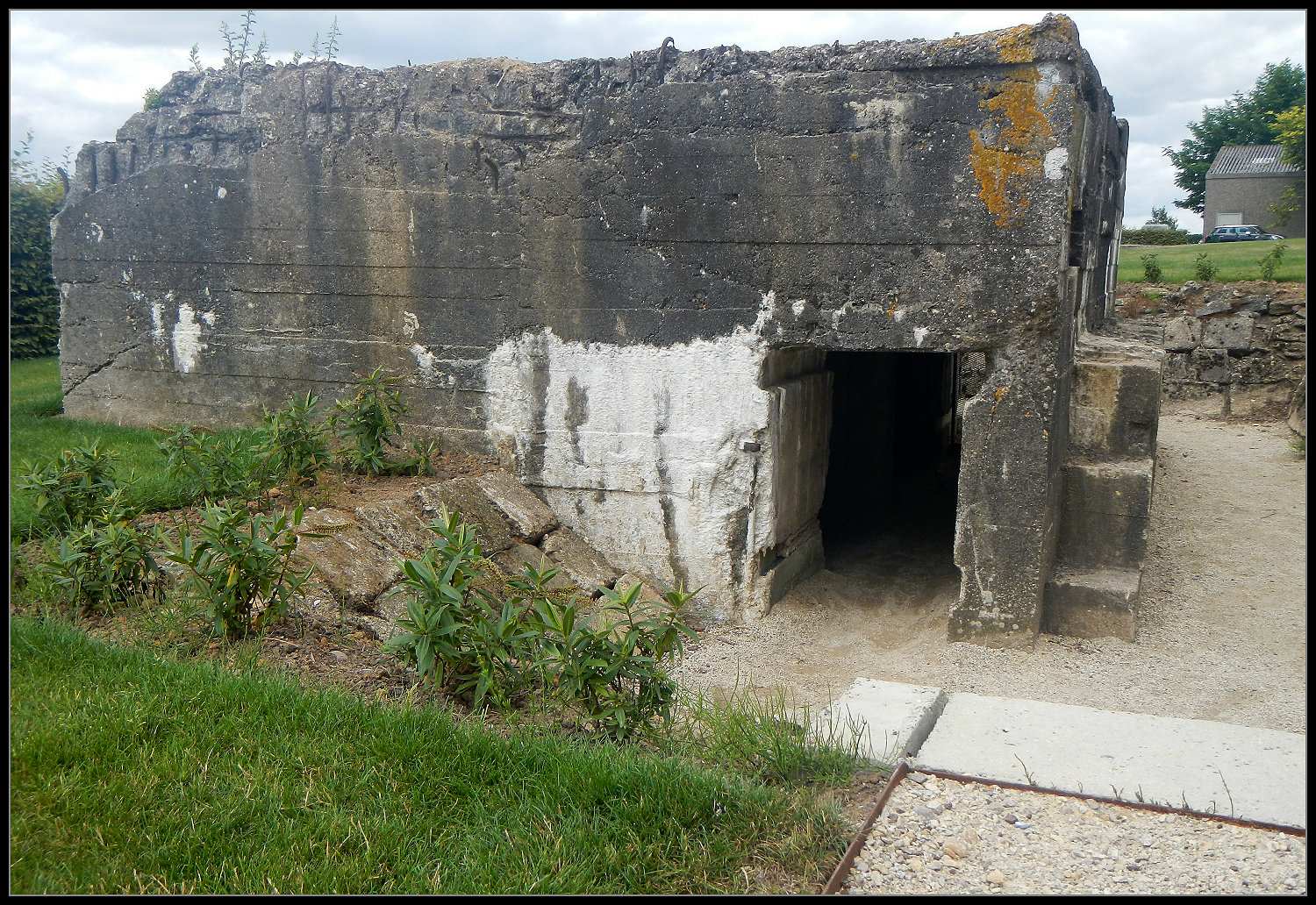 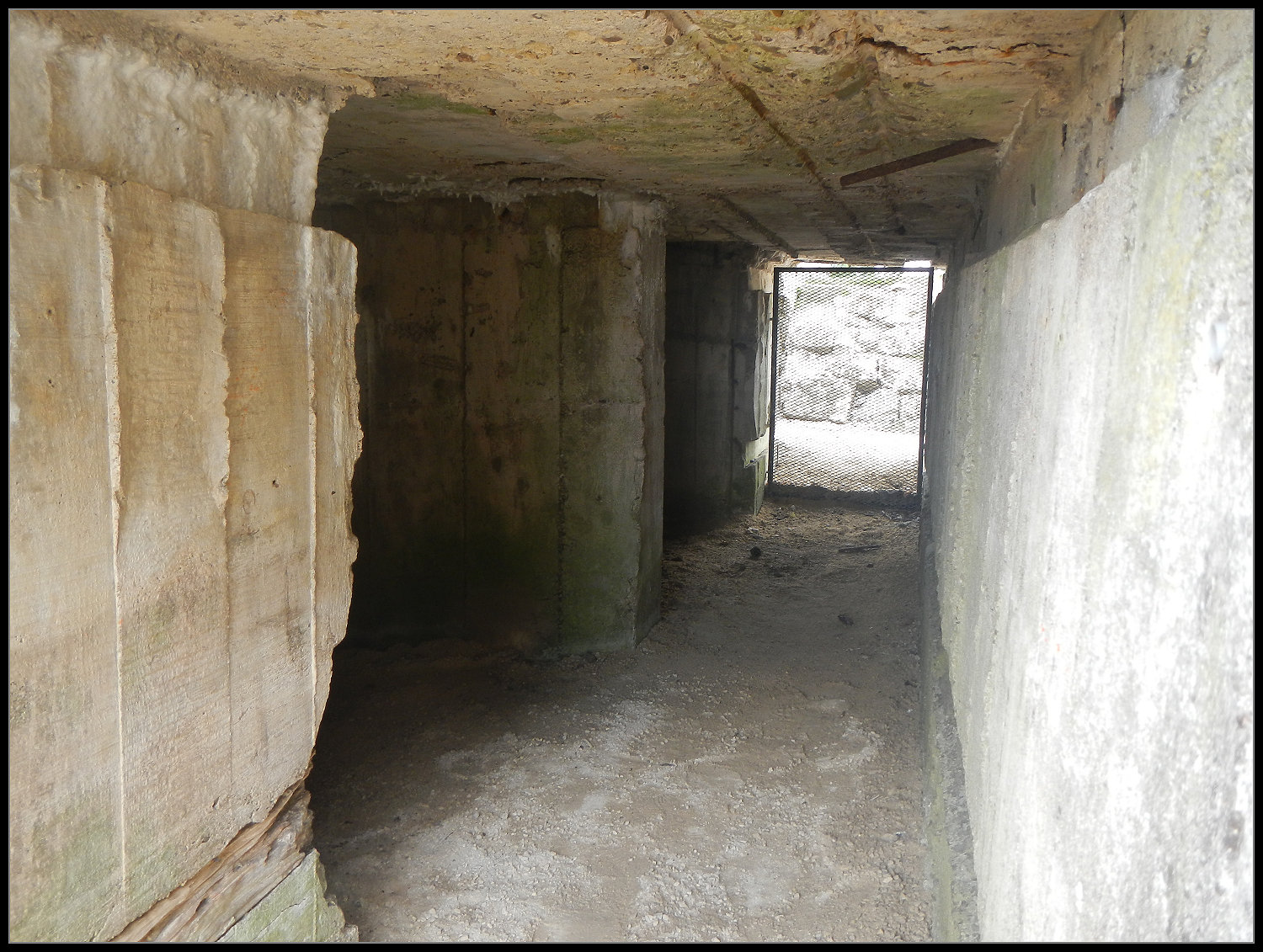 The Messines Ridge (New Zealand) Memorial stands within Messines Ridge British Cemetery and commemorates over 800 soldiers of the New Zealand Expeditionary Force who died in or near Messines in 1917 and 1918 and who have no known grave. (CWGC.org) 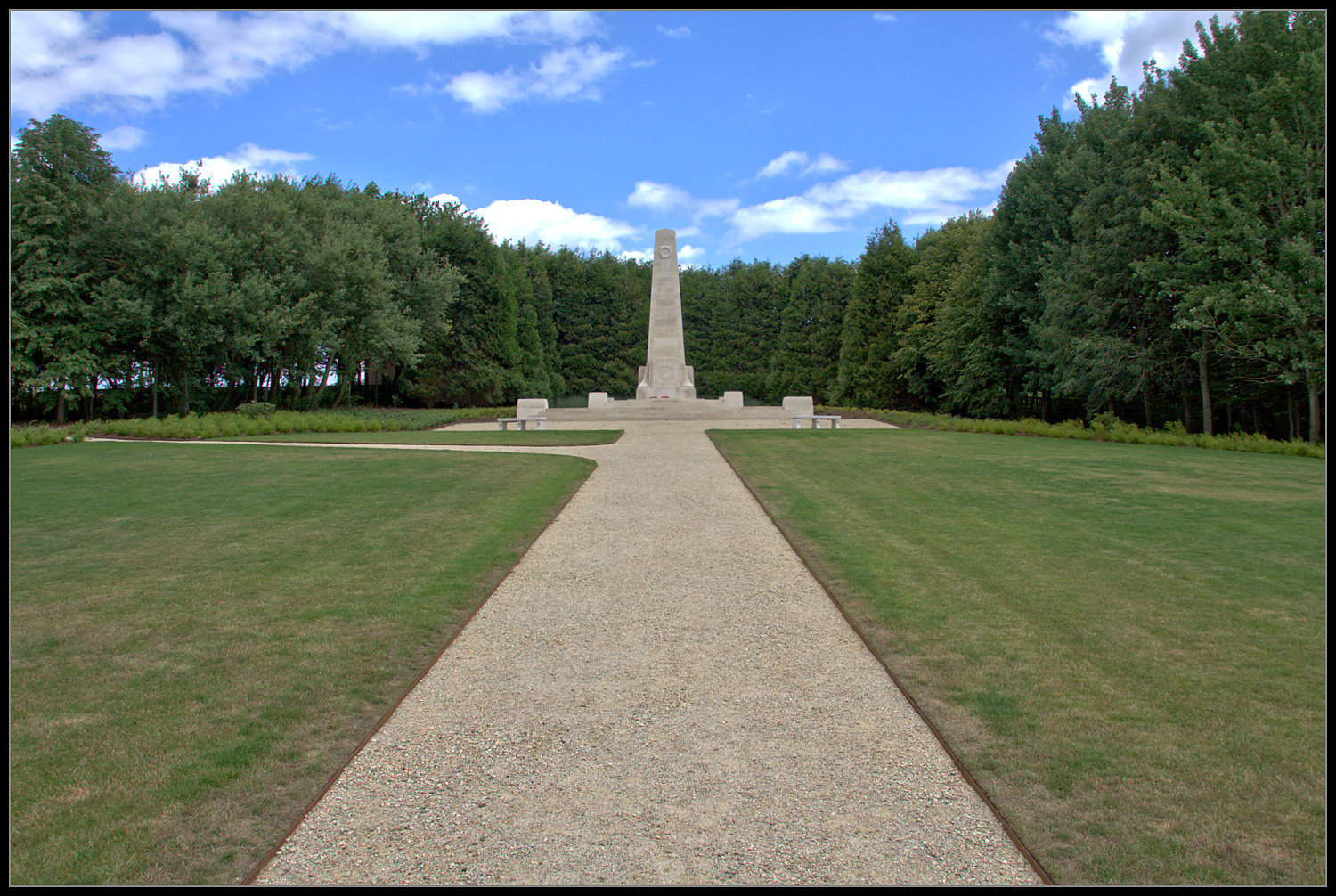 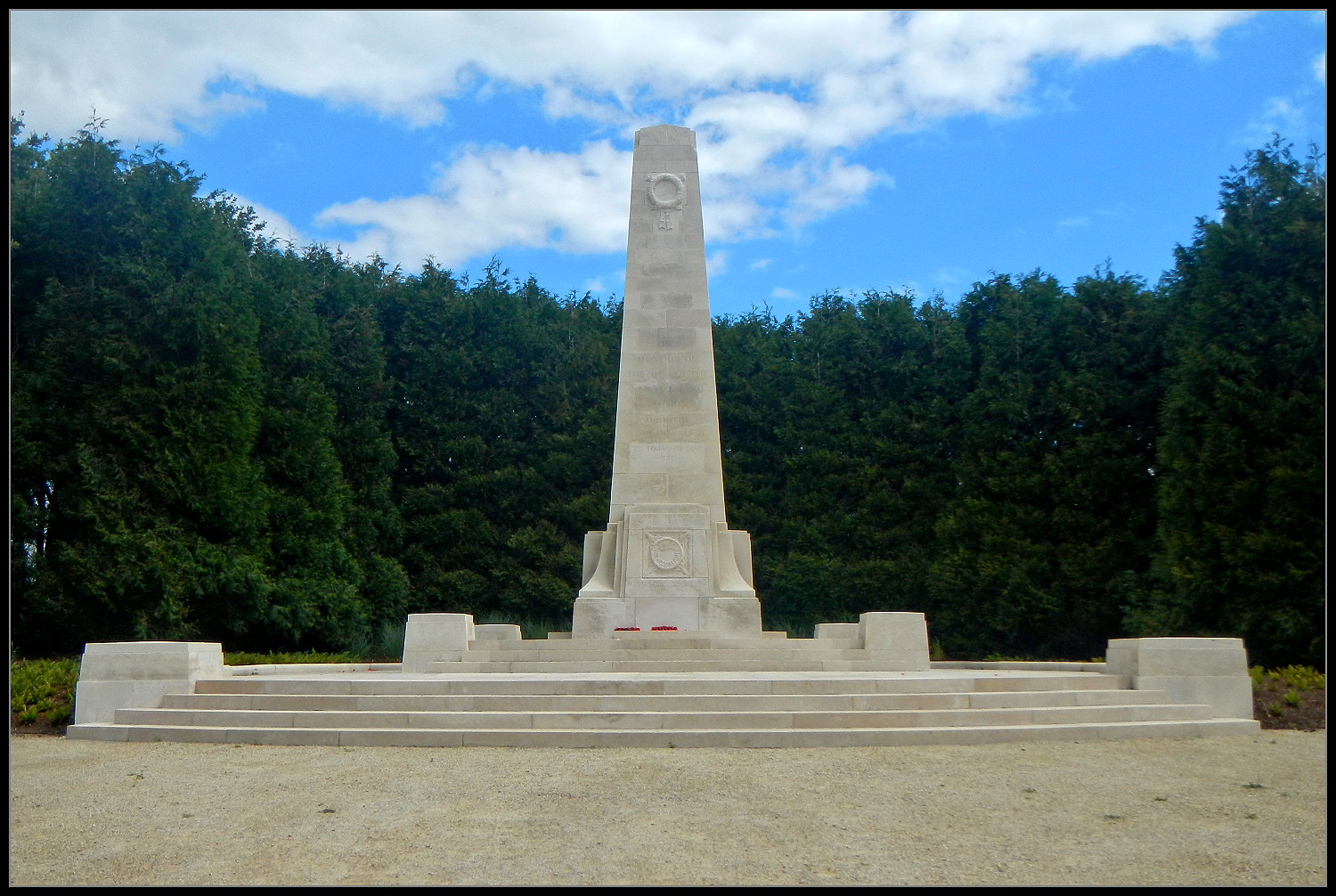 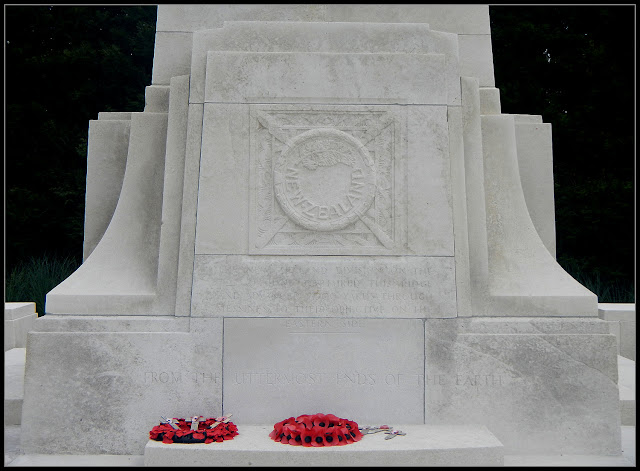 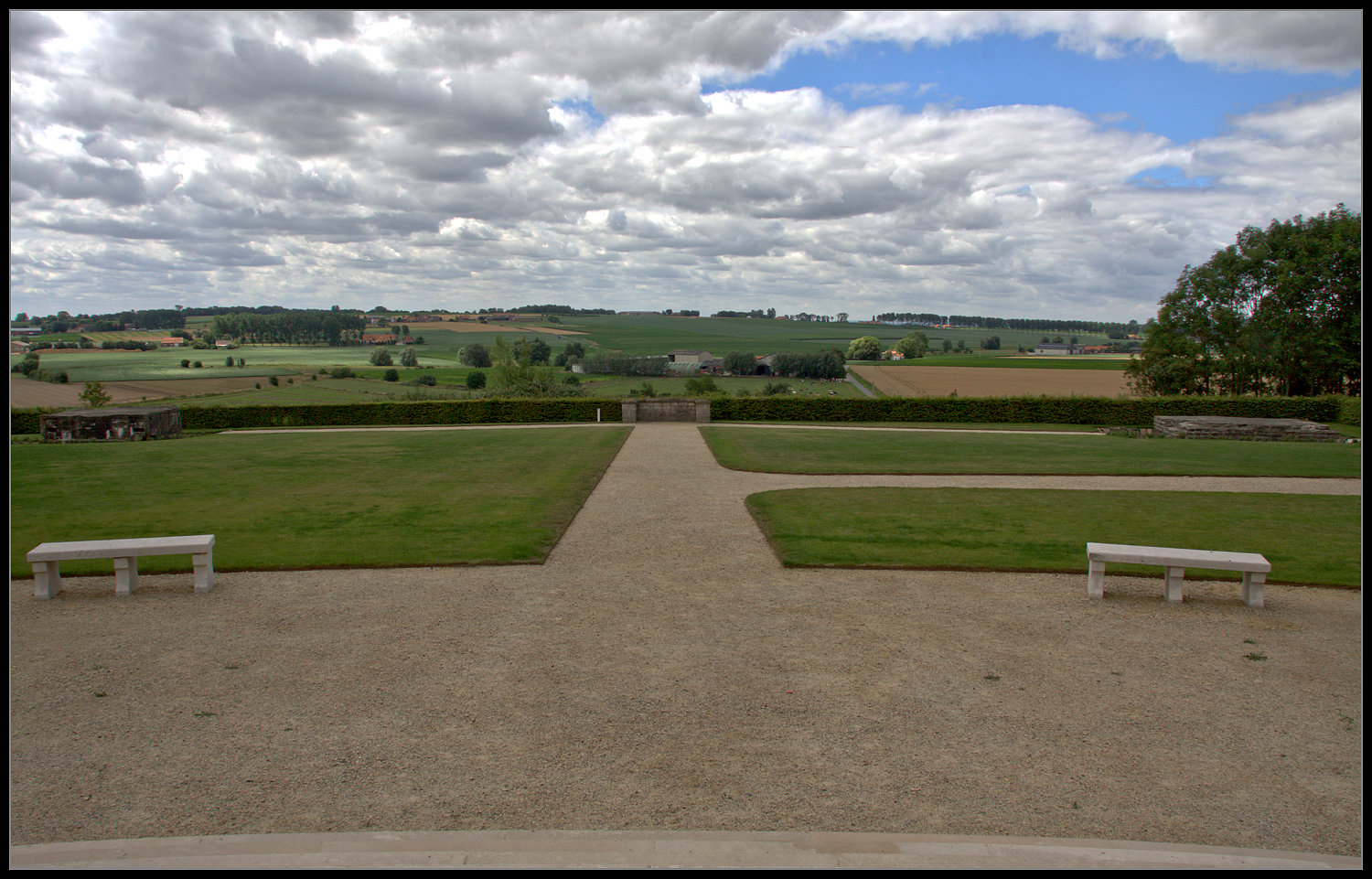 Adjacent to the New Zealand Memorial is the Messines Ridge British Cemetery. There are now 1,531 Commonwealth servicemen of the First World War buried or commemorated in the cemetery. We didn't actually go for a walk around this one as we wanted to move on. Our next stop was the The Huts Cemetery. This one is a little of the beaten track, only a little mind you. It's on 6 Kkms south-west of Ieper (Ypres) town centre.  This cemetery takes its name from a line of huts strung along the road from Dickebusch (now Dikkebus) to Brandhoek, which were used by field ambulances during the 1917 Allied offensive on this front. Plots I to X and XII to XIV were filled between July and November 1917. Plots XV and XI followed. Nearly two-thirds of the burials are of gunners as many artillery positions existed nearby. The cemetery was closed in April 1918 when the German advance (the Battle of the Lys) brought the front line very close. The advance was finally halted on the eastern side of the village, following fierce fighting at Dickebusch Lake, on 8 May. There are now 1,094 Commonwealth burials of the First World War in the cemetery. 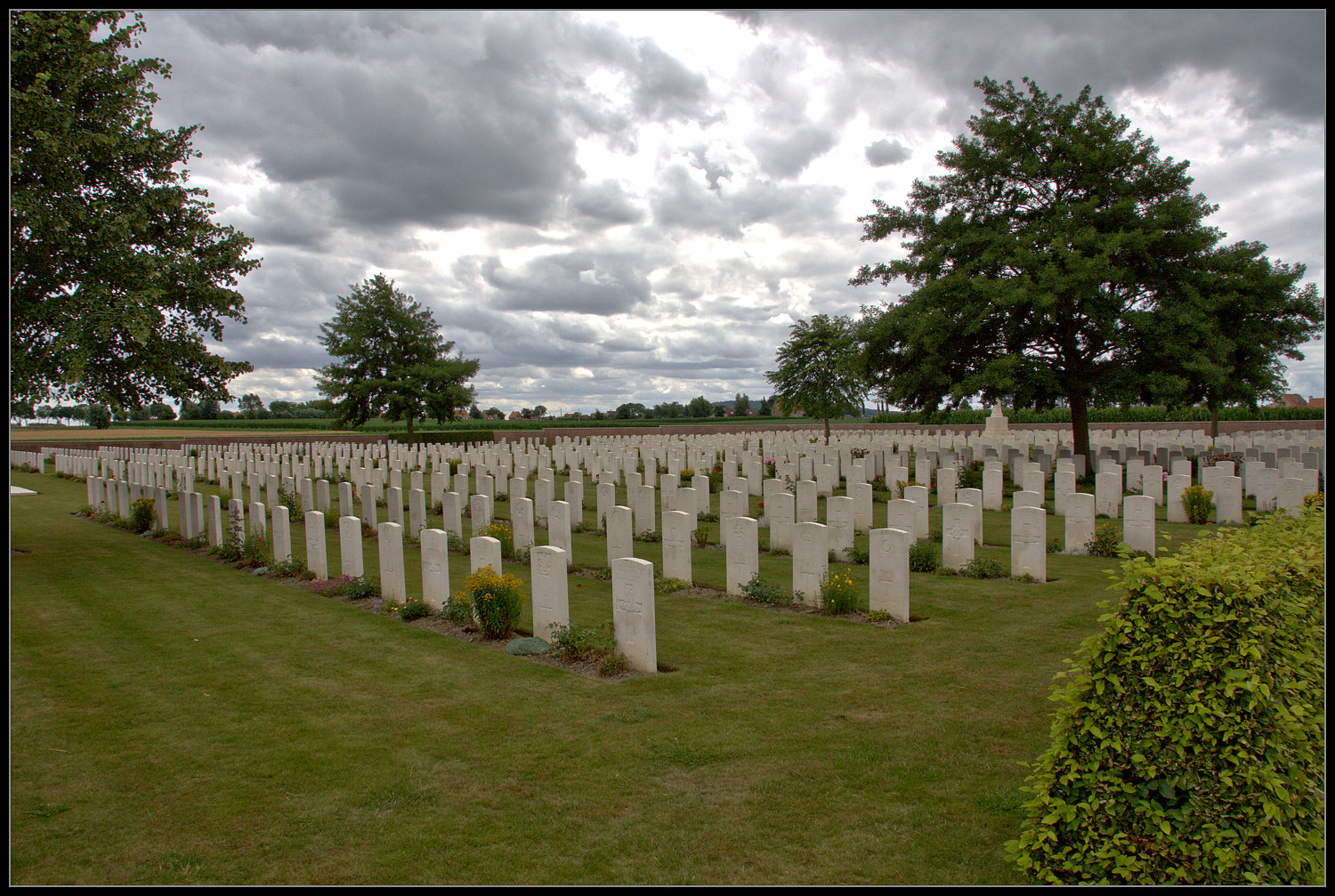 We were going here because earlier in the year, as part of buy a poppy week a work colleague of my wife's, Ann, had purchased poppy to commemorate a Australian soldier who had died in world War I. The soldier, Ann's poppy was for was Private R.T.O Rees, Australian Army Service Corps. He died on the 28 September 1917, aged 26. 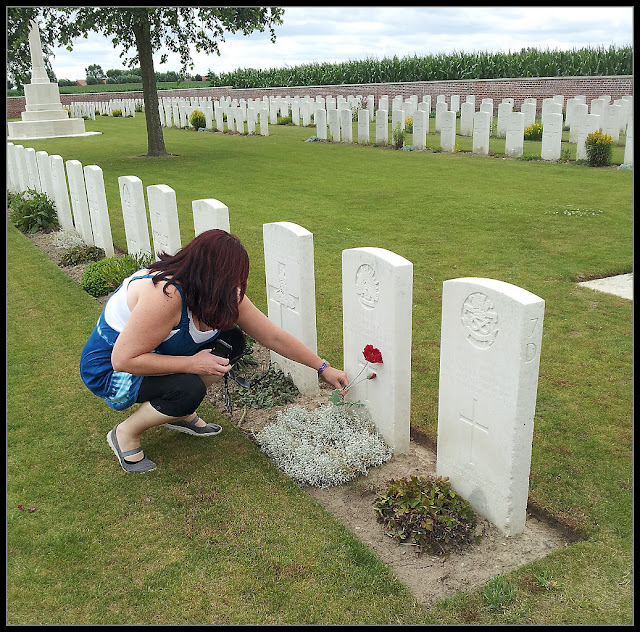 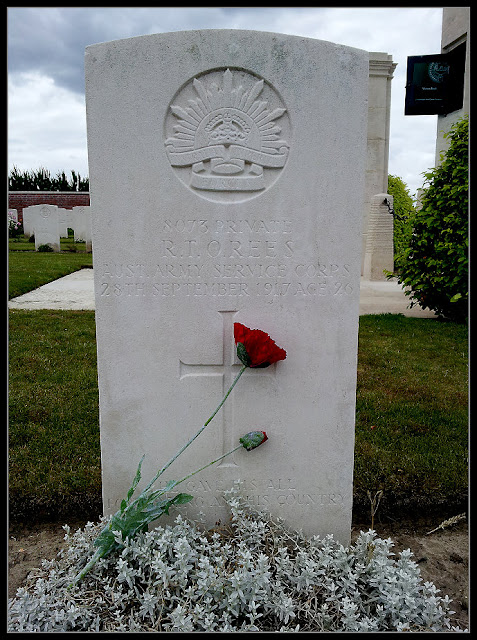 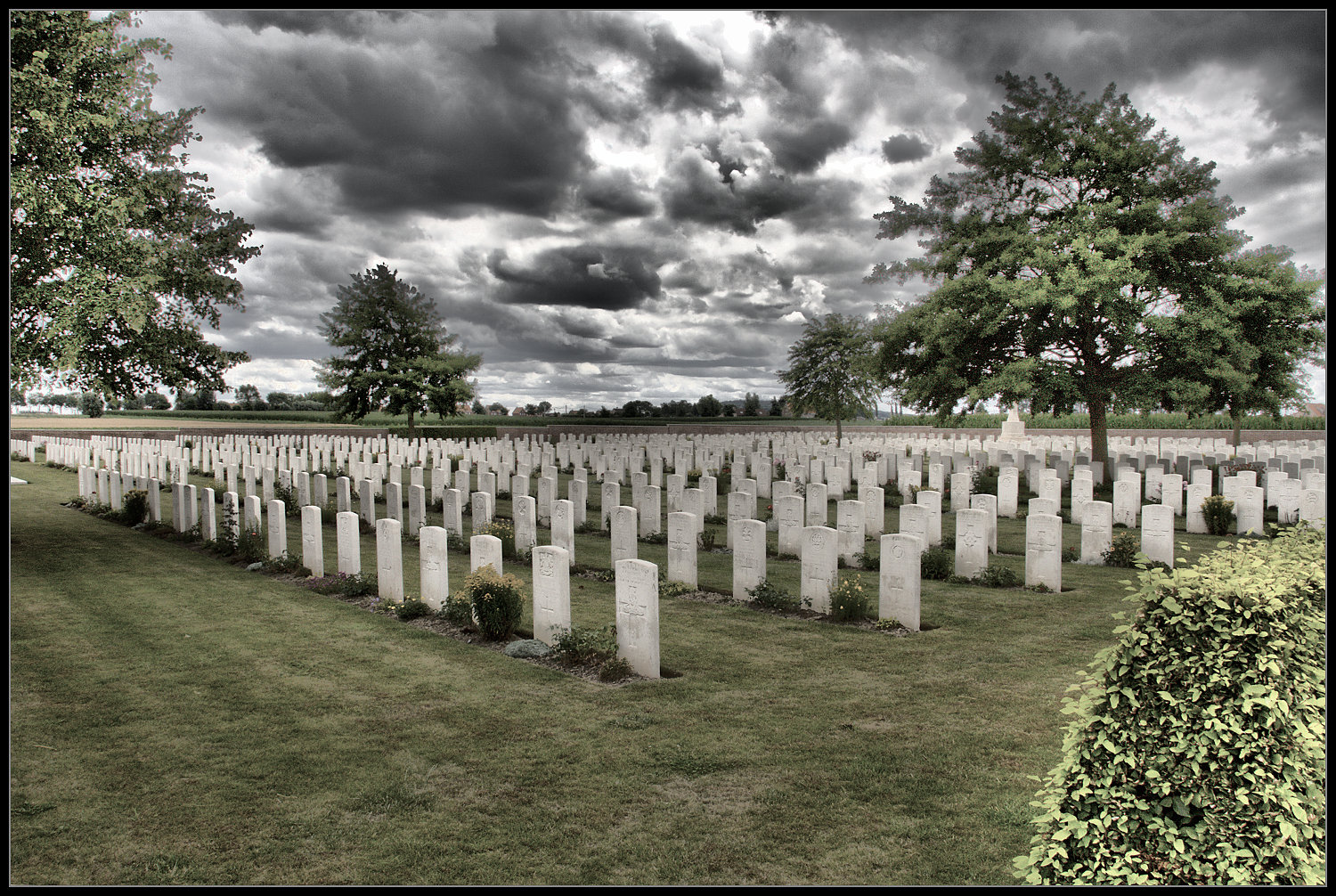 |
|
|
|
Post by Calum on Nov 22, 2015 9:24:09 GMT 12
Been a while since I've updated this. Still a few more places to visit. This is Hill 60 Hill 60 is an artificial creation consisting of the spoil taken from the nearby railway cutting when the railway was under construction in the 19th century. At the time it had the more romantic title of ‘Côte des Amants’ (Lover’s Knoll). (Wikipedia) Hill 60’s prominence, in this relatively low–lying region, made it an objective of both armies and it was continually fought over from late 1914. Underground mining began in early 1915 as British miners tunnelled towards the German lines using the ‘clay kicking’ method. On 9 November 1916, the 1st Australian Tunnelling Company took over the Hill 60 mineshafts. By then deep shafts ran out metres under the German lines where they had been filled with high–explosive ammonal and sealed. Electric detonator cable ran along the sealed galleries to the explosives and it was the job of the incoming Australian miners to ensure that the enemy did not discover the mines or cut the detonator cable. The defensive underground shafts and galleries sunk by these ‘Digger’ miners had a real Australian flavour from the names bestowed on them – Melbourne, Sydney, Adelaide, Perth, Hobart, Newcastle and Brisbane. The protection of the great mine was part of the preparations for the major British ‘Flanders Offensive’ planned for the second half of 1917 around Ypres. Hill 60 marked the northern extremity of a German bulge or ‘salient’ into the British lines running from here, through St Eloi and Petit Bois, to Ploegsteert Wood south of Mesen (Messines). It was to straighten this line, in the lead–up to the larger operation planned to open in late July 1917 towards the east of Ypres, that the Battle of Messines was fought on 7 June 1917. At the opening of this battle, at 3.10 am, 19 great mines, at various locations along the salient line, were exploded. These, like the mine at Hill 60, had been excavated under the German positions in the year leading up to the Messines attack. For the seven months before the blowing of the Hill 60 mine it fell to the Australians to ensure that the Germans did not find it. On 3 June, four days before the Messines attack was due to begin, the forward ‘listeners’ were withdrawn and the mine shafts finally tamped. Constant testing of the cables from that point revealed that they had not been discovered and, at 3.10 am on 7 June, the Hill 60 and the Caterpillar mine, along with the 17 others on the Messines front, were blown. The explosions at Hill 60 killed 687 soldiers of the German 204th Division and blew a crater 60 feet deep and 260 feet wide. (ww1westernfront.gov.au) When we visited the site was under some major work. It is one of the most visited sites in the Ypres Salient. This is the Memorial to the 1st Australian Tunnelling Company, Hill 60.  The bullet holes are from battles around here in World War II 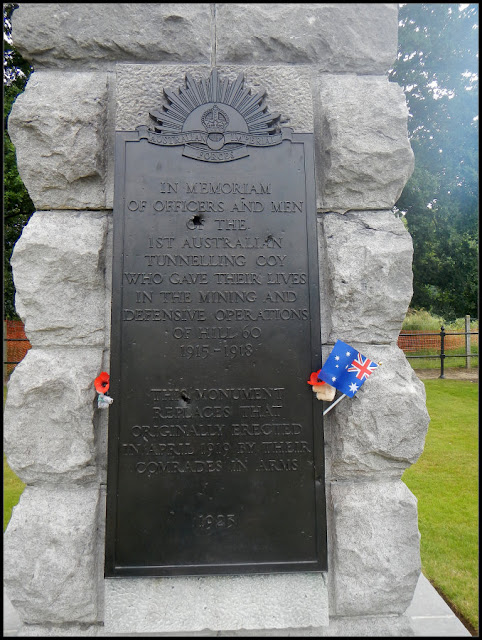 Even after 98 years bits and pieces from the war remain. This iron ball was in one of the craters on the Hill 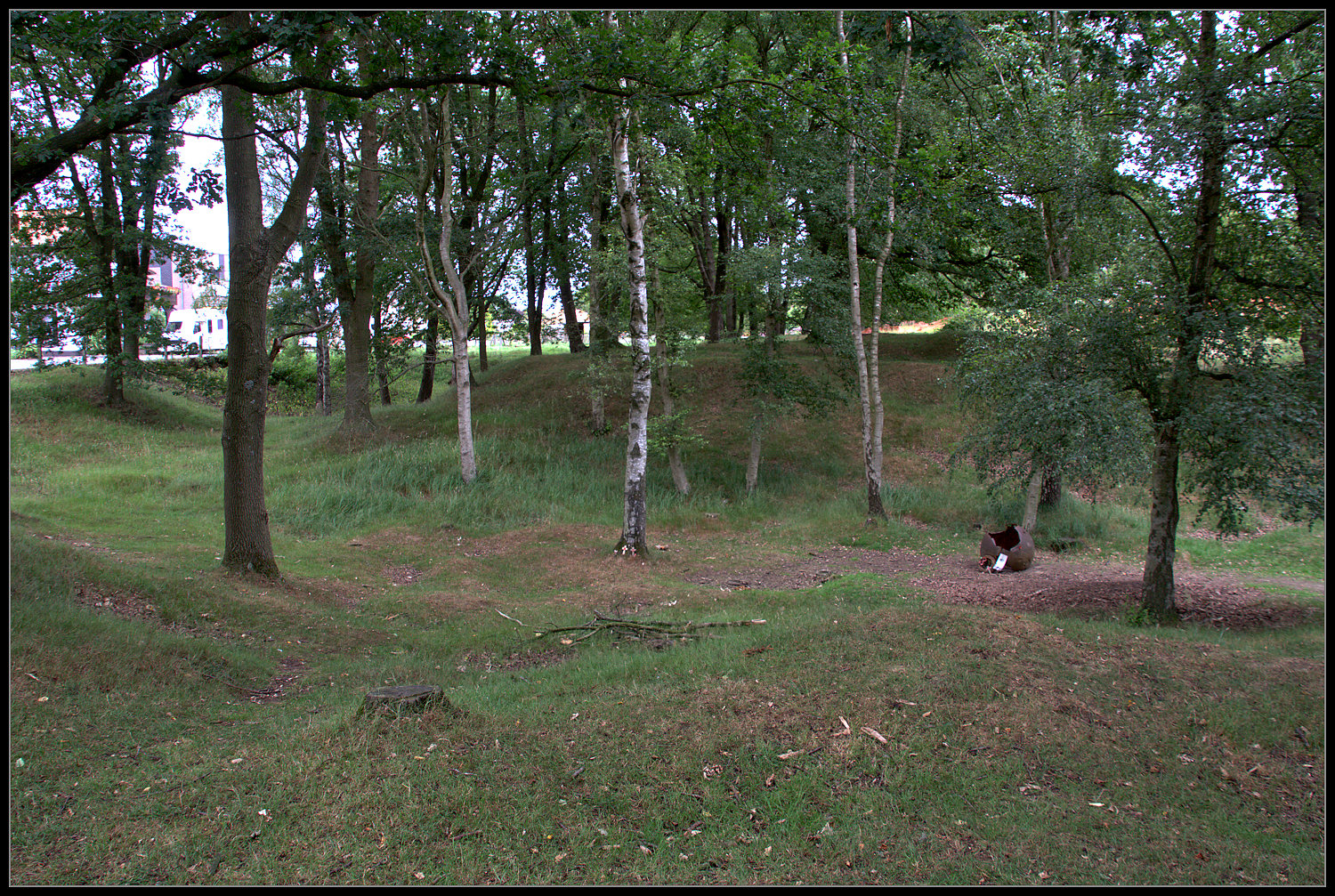 I don't know what this is though. 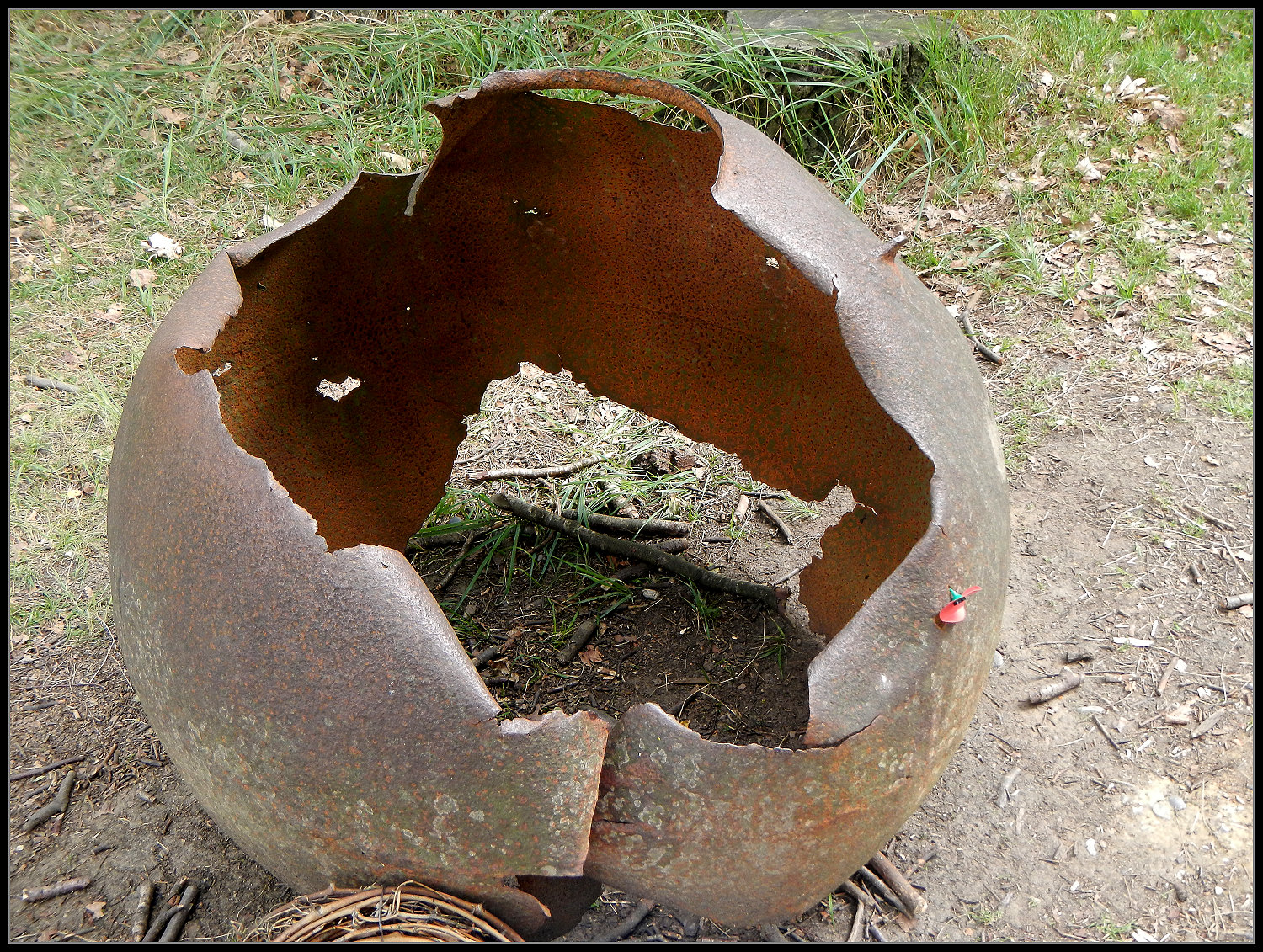 All over the site are the remains of German strong points destroyed or buried when the mines went of. 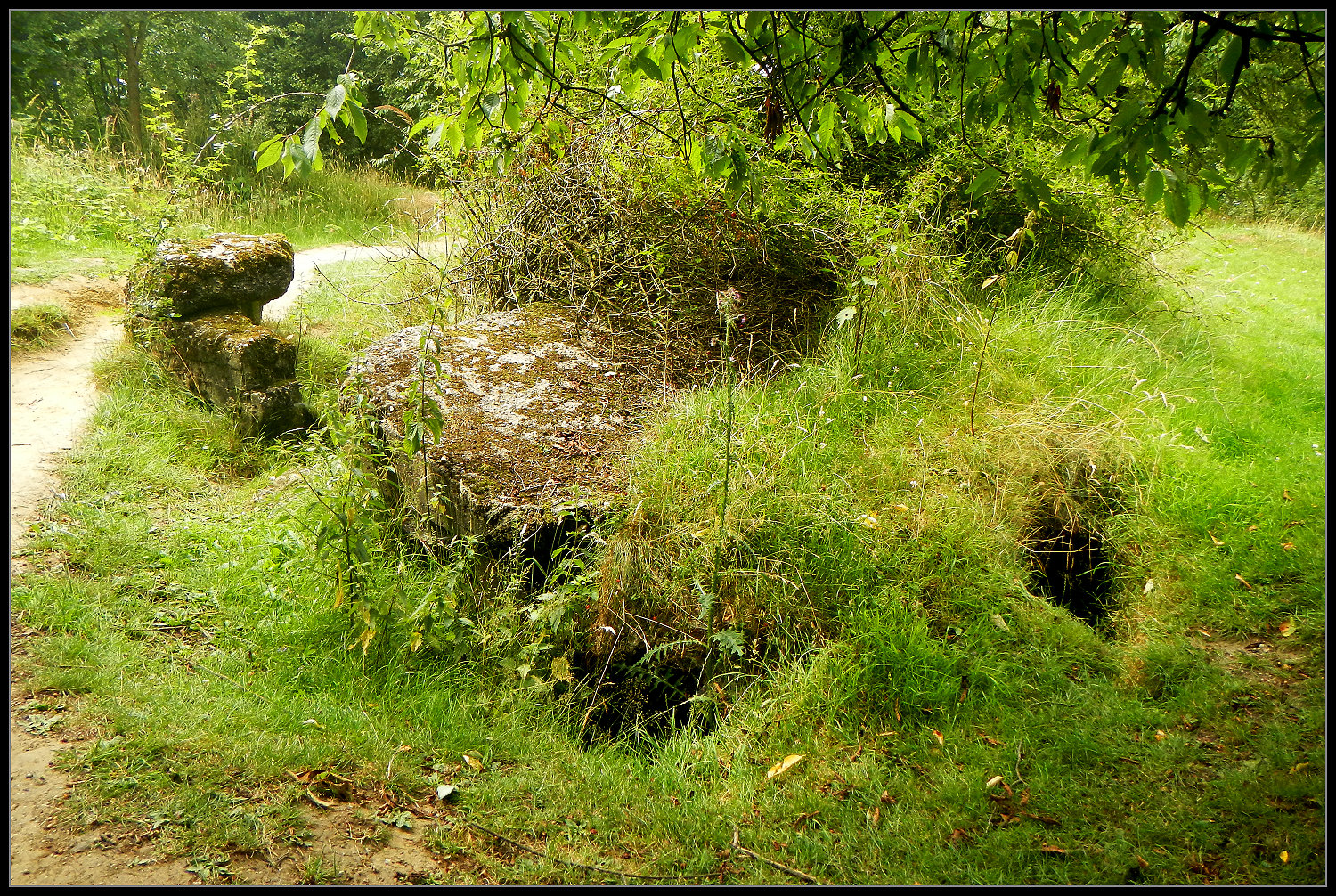  This one was particularly impressive. Without Tanks structures like these would be difficult to attack.  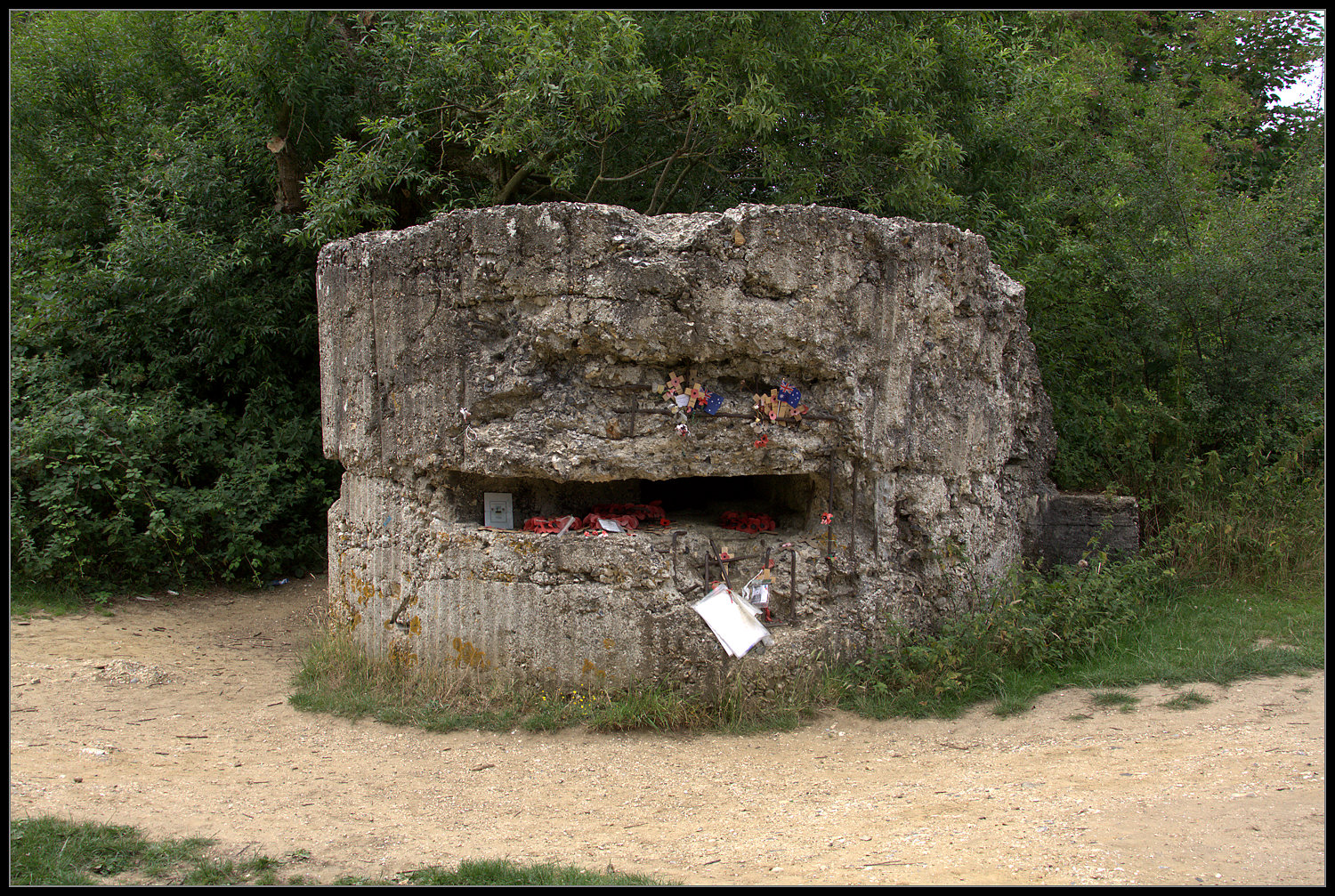 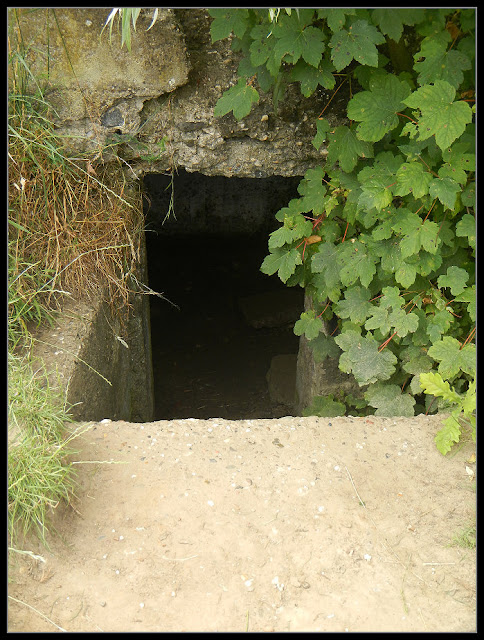  Looking down into the main crater.  My wife, Jo in the main crater  View from the bottom of crater looking out.  There are other memorials on this site. This one is the 14th (Light) Division Memorial.  This one is Queen Victoria's Rifles Memorial The memorial to the Queen Victoria's Rifles (9th Battalion The London Regiment) is located within the Hill 60 Battlefield Memorial Park. It was replaced after the original was damaged during the Second World War. On the night of 20–21 April 1915, Second Lieutenant Geoffrey Harold Woolley and a handful of men were the only defenders on the hill and continually repelled attacks on their position. He encouraged the men to hold the line against heavy enemy machine gun fire and shellfire. For a time he was the only officer on the hill. When he and his men were relieved on the morning of 21 April only 14 out of a company of 150 had survived. For his gallantry he was awarded the Victoria Cross, the first to be awarded to a Territorial Force officer.(wikipedia)  (Wikipedia image) And finally there is a memorial to two resistance fighters from World War II  (Wikipedia image) Across the railway from Hill 60 is the Caterpillar Crater, the results of the explosion from the Caterpillar mine  |
|